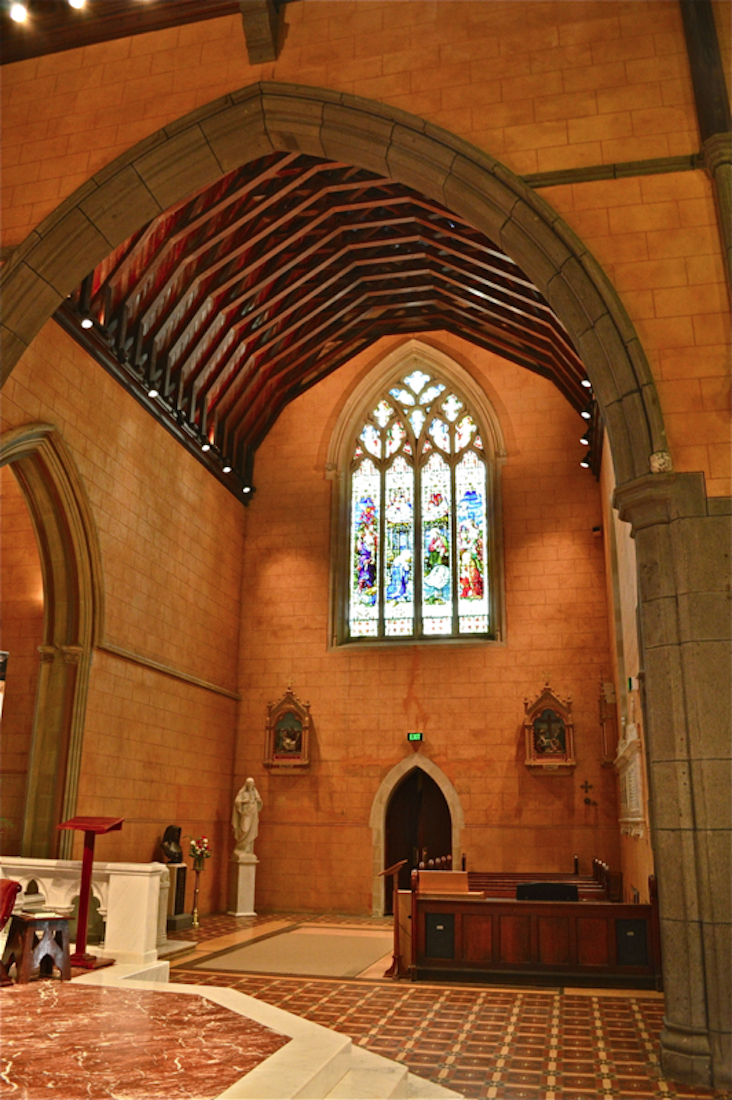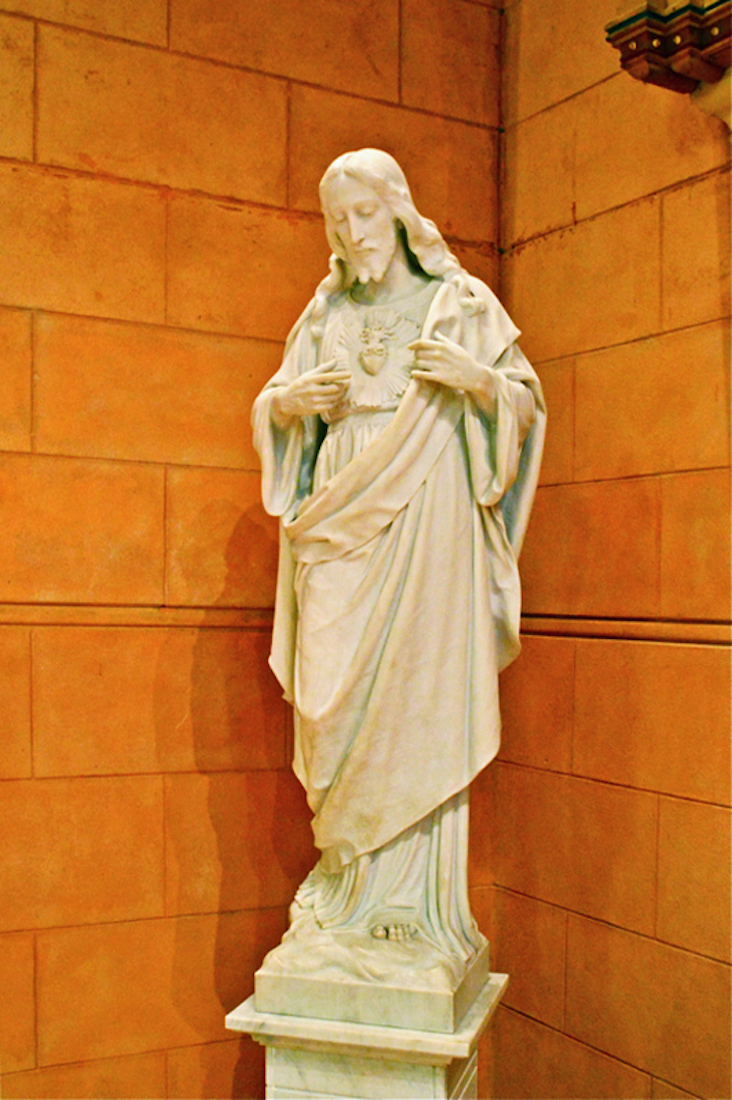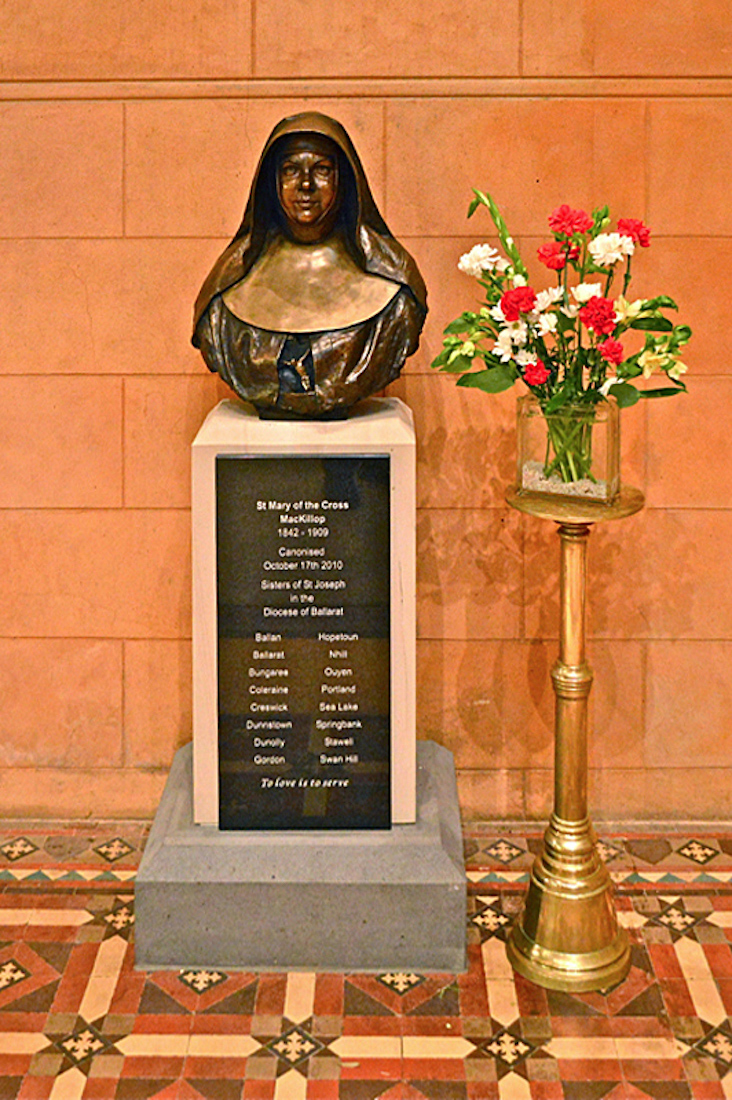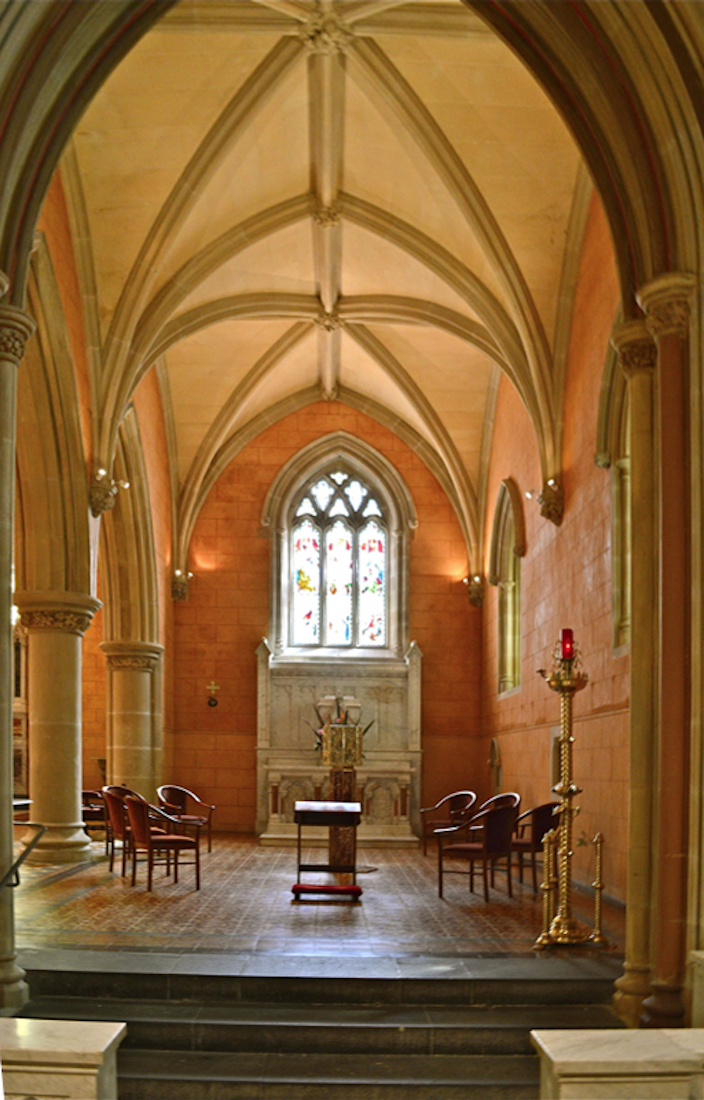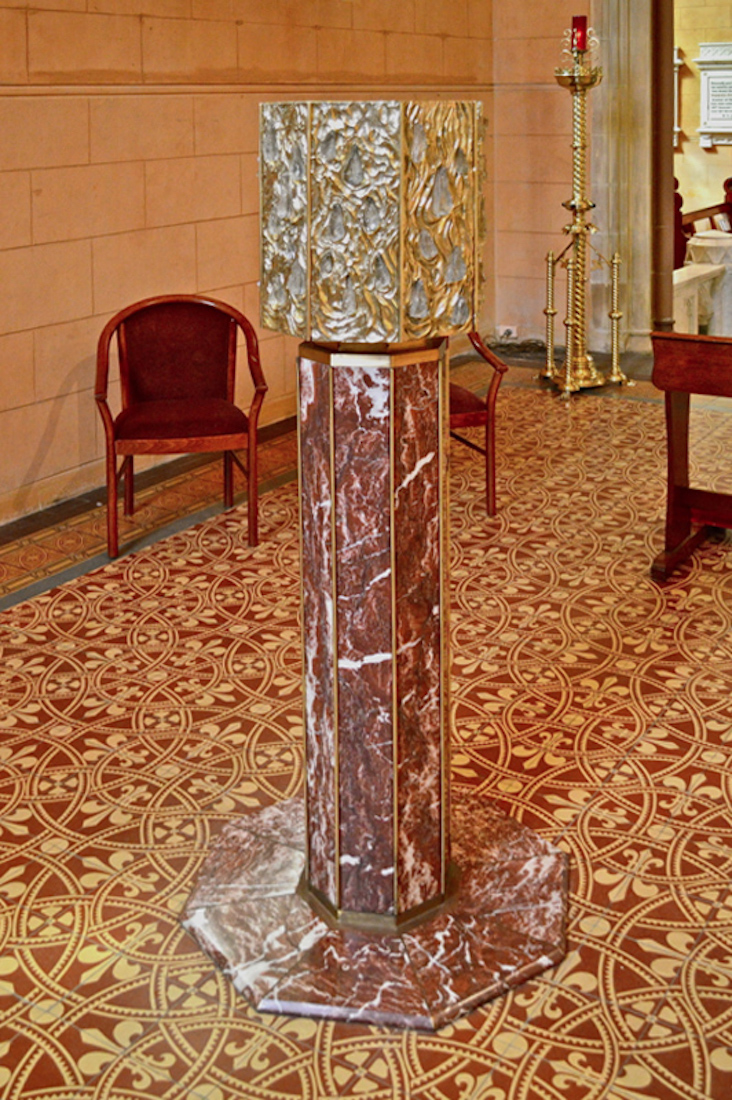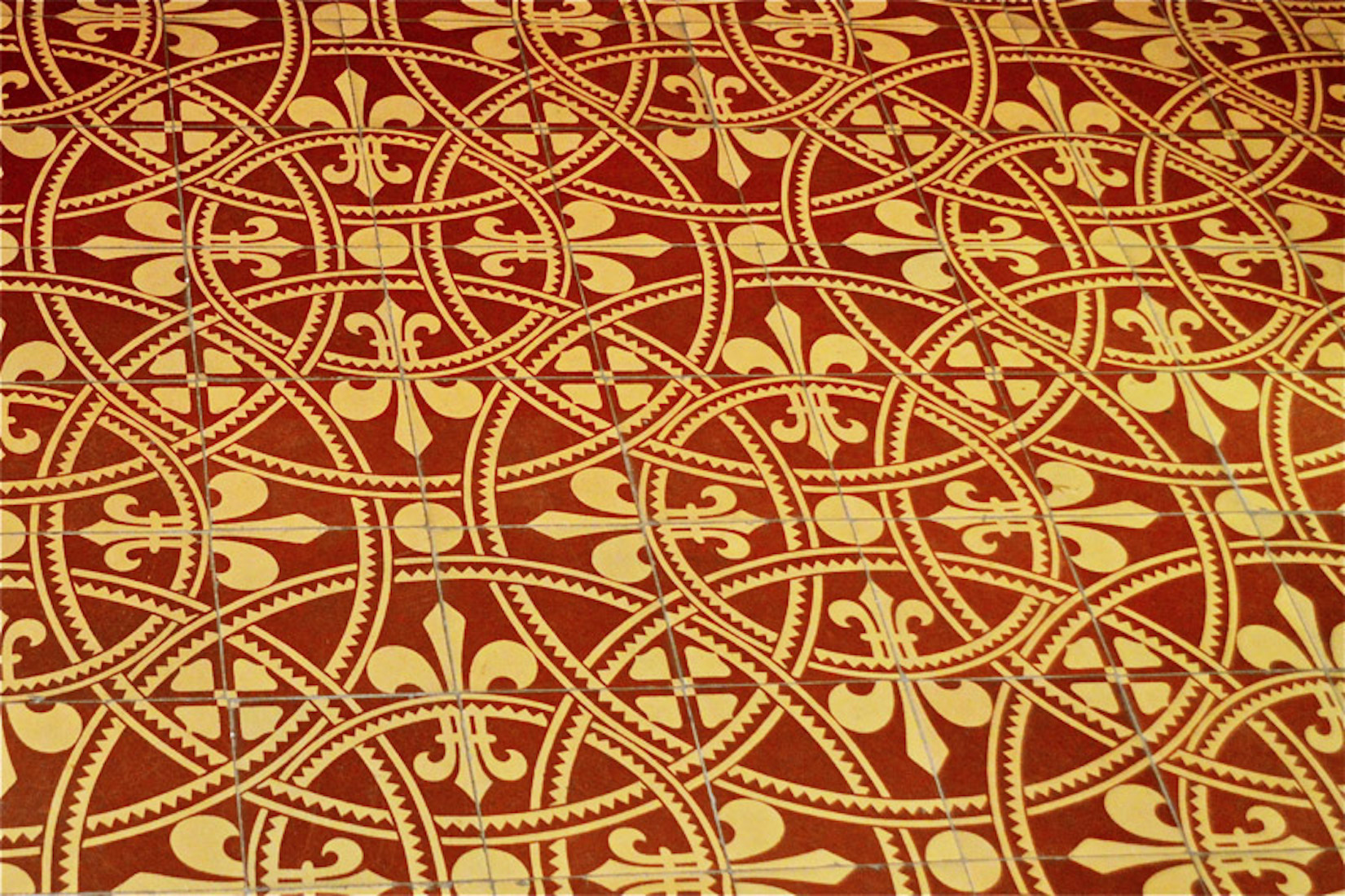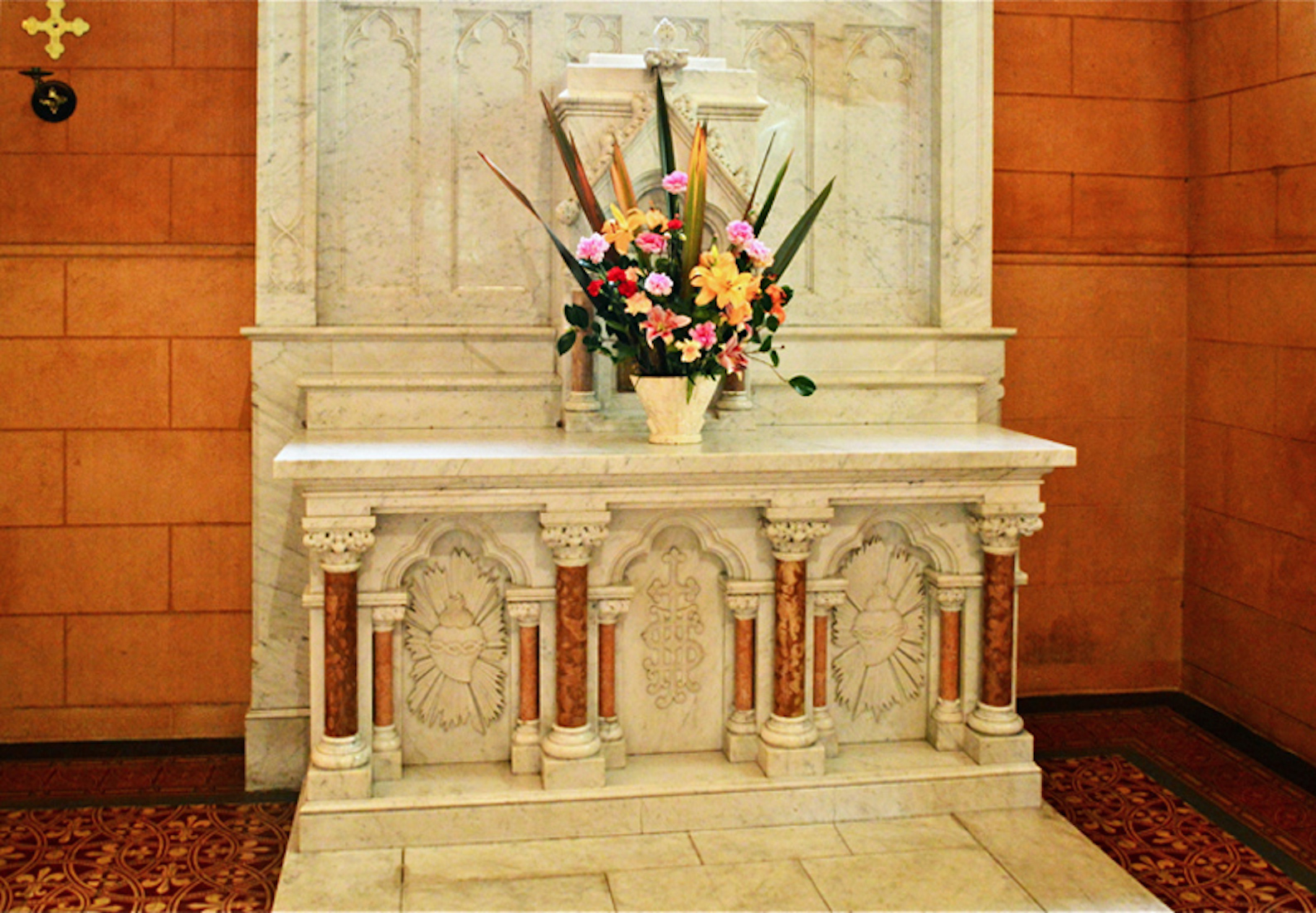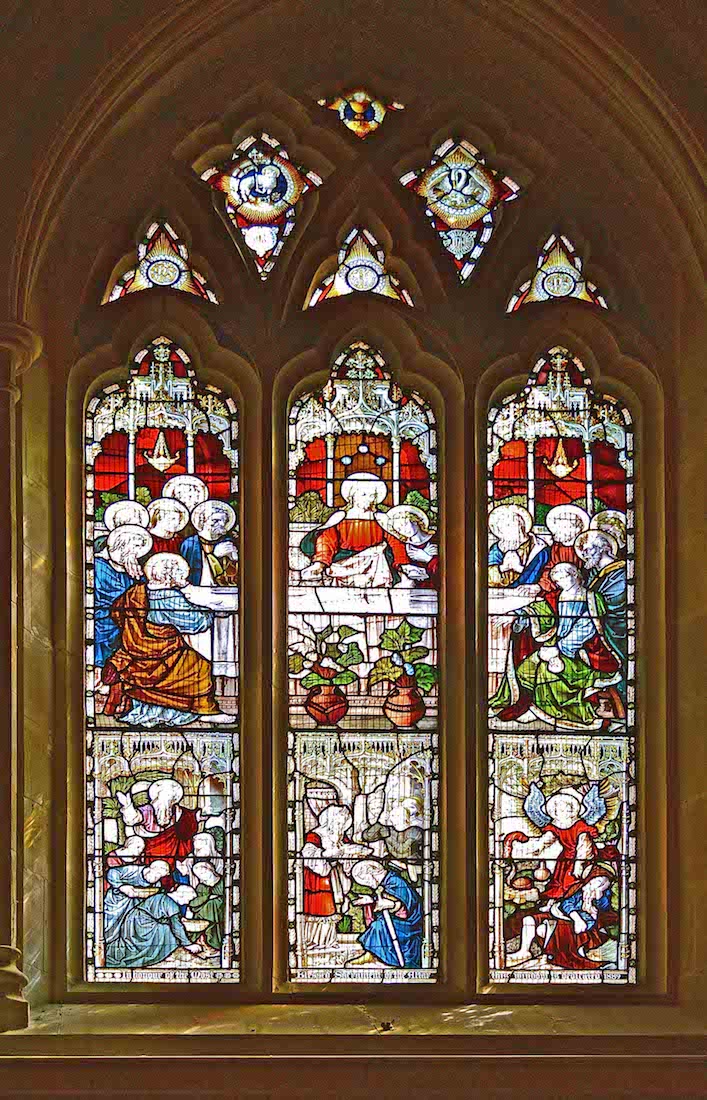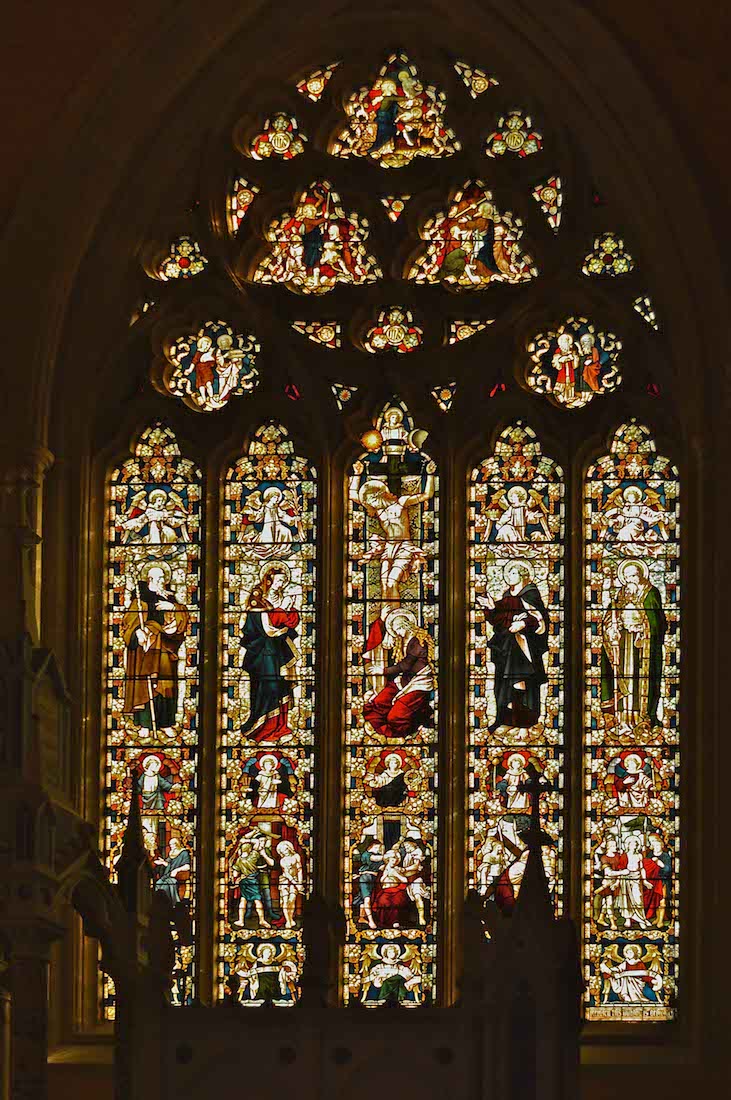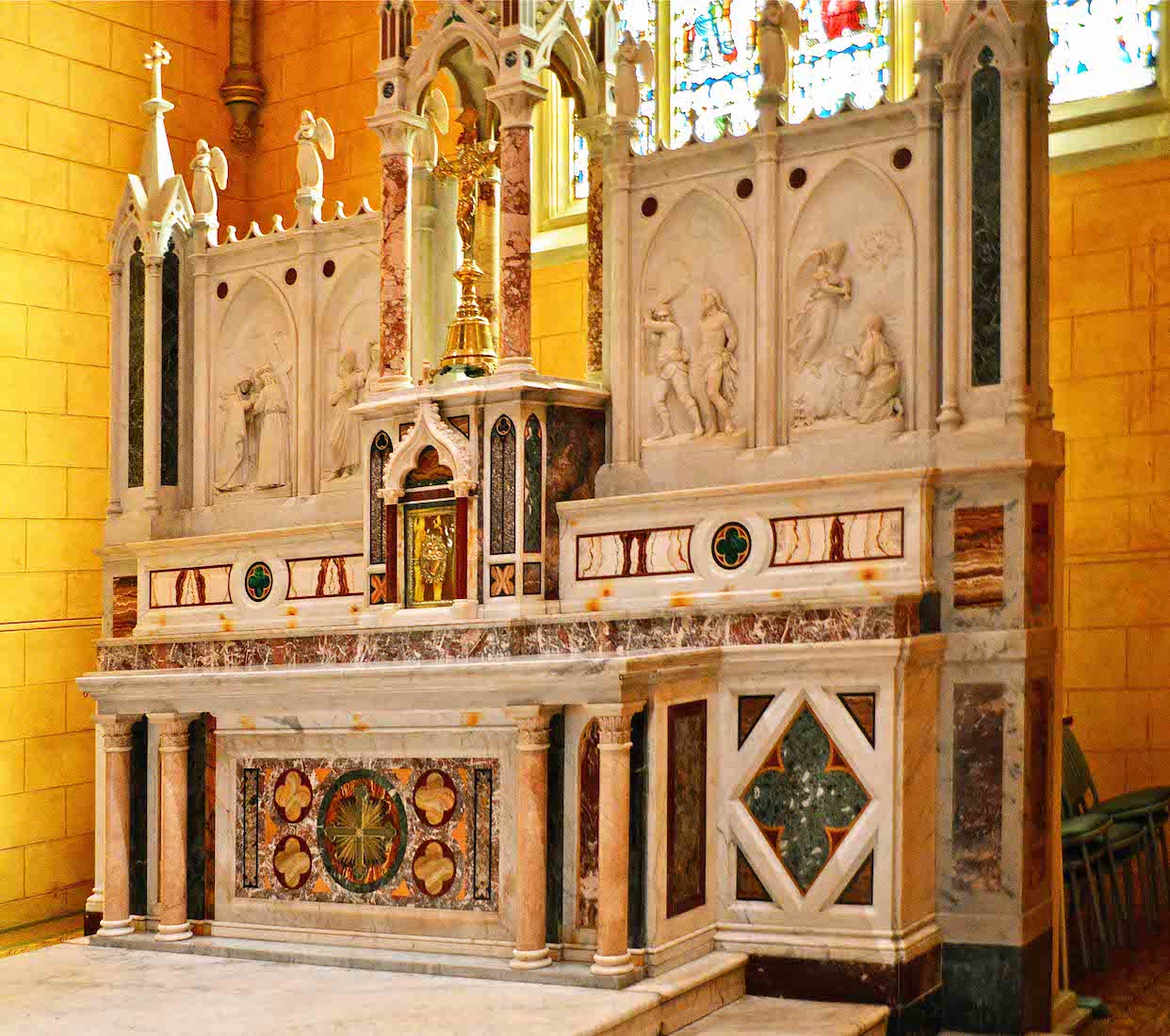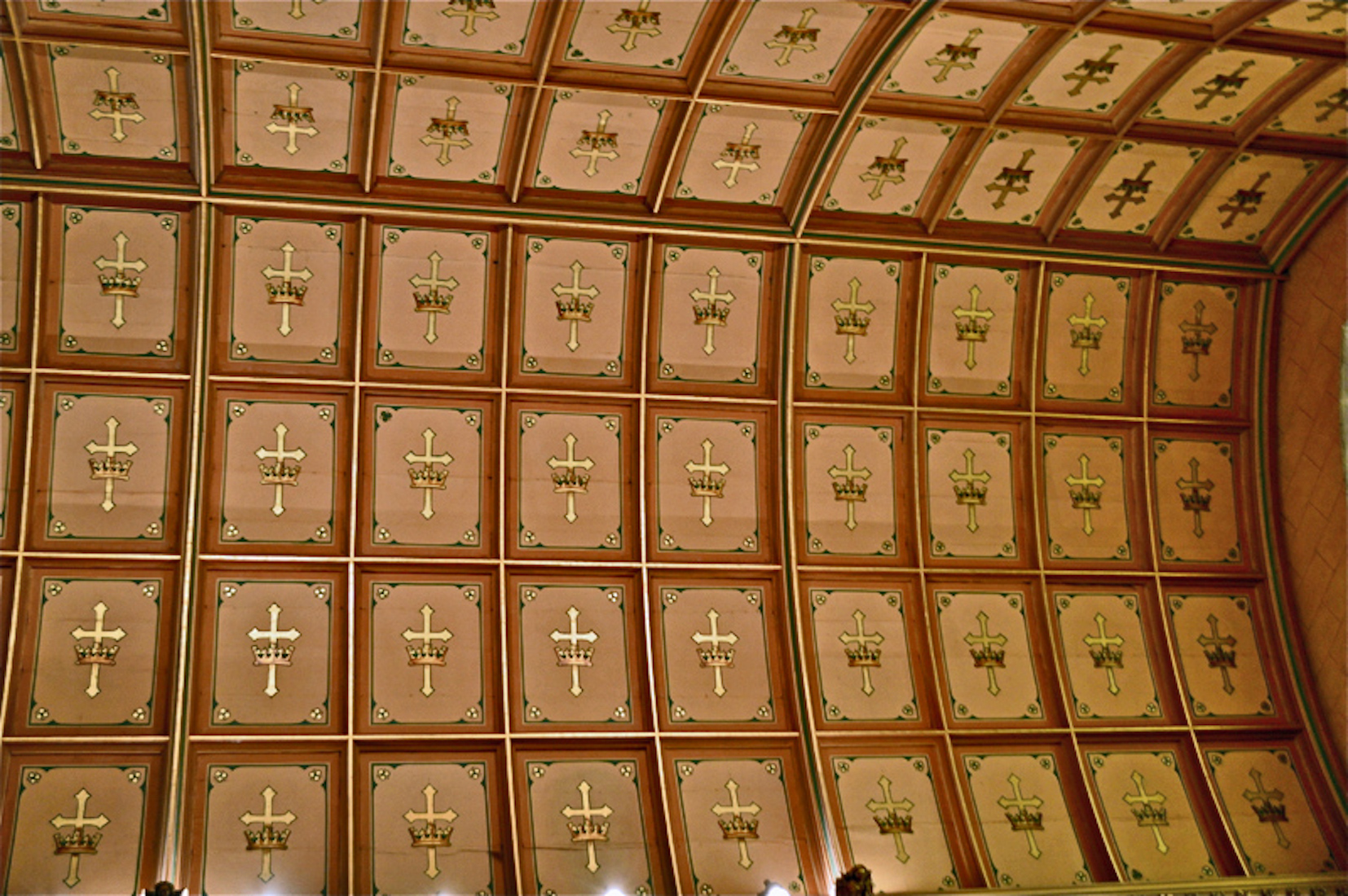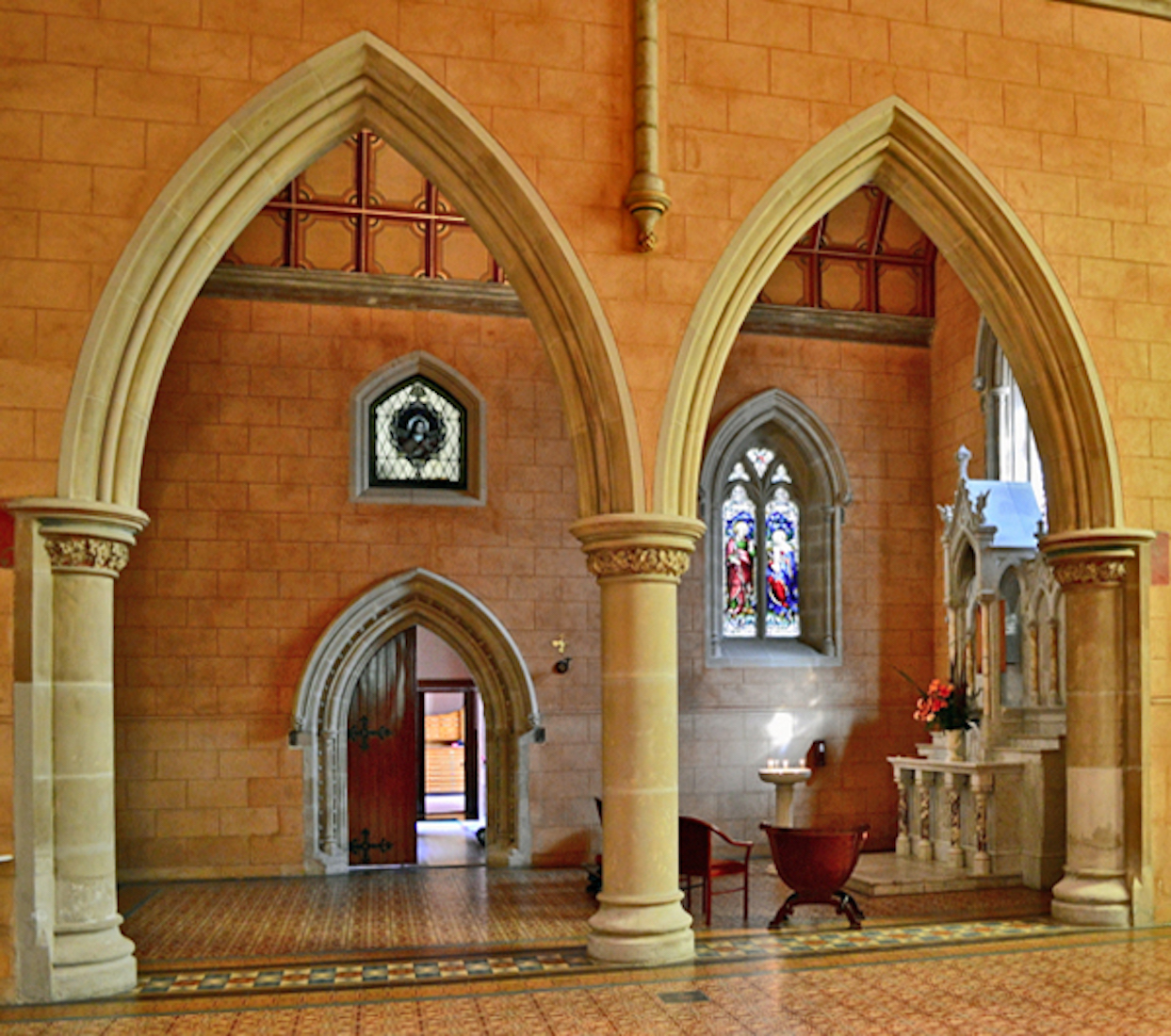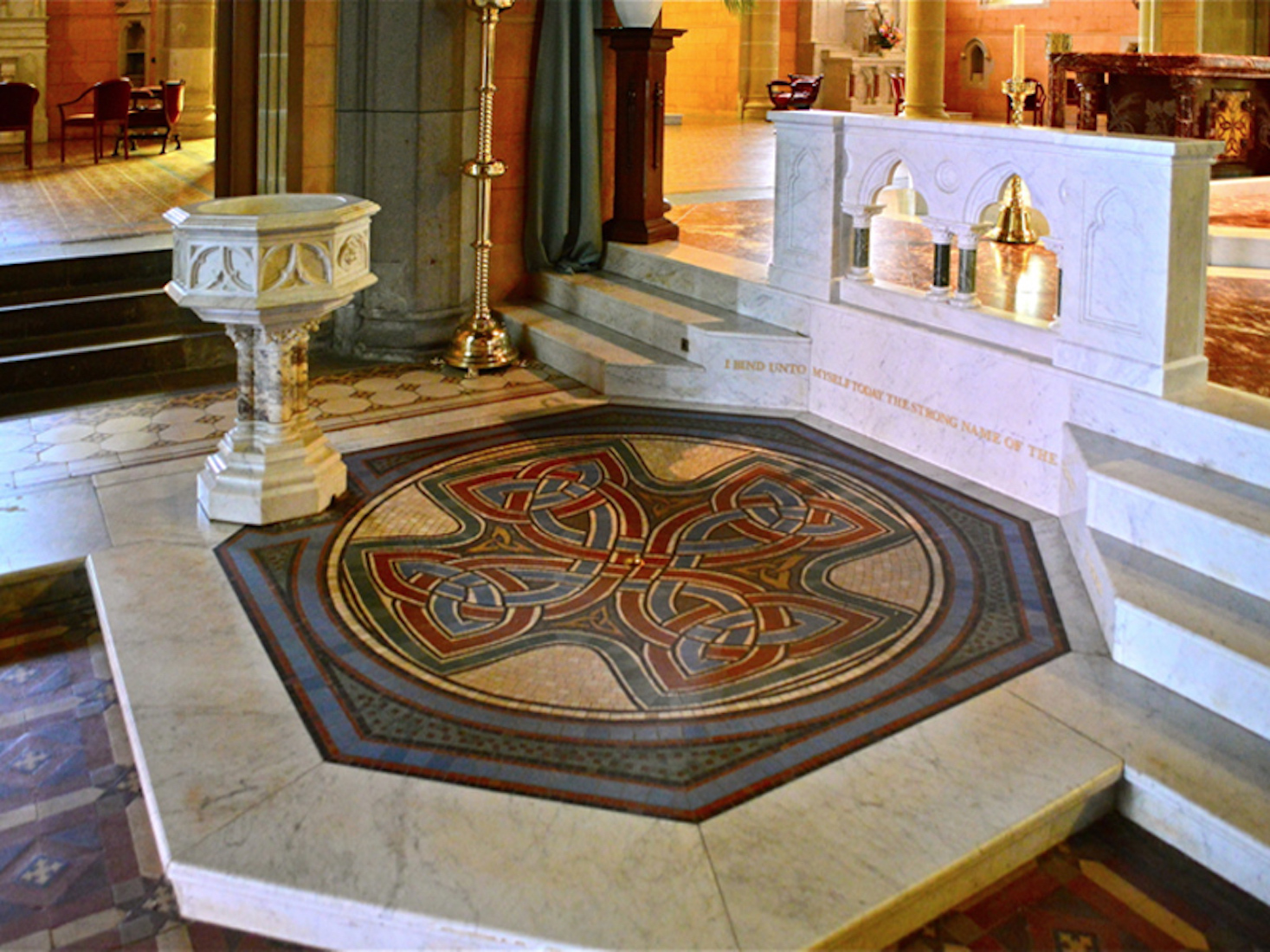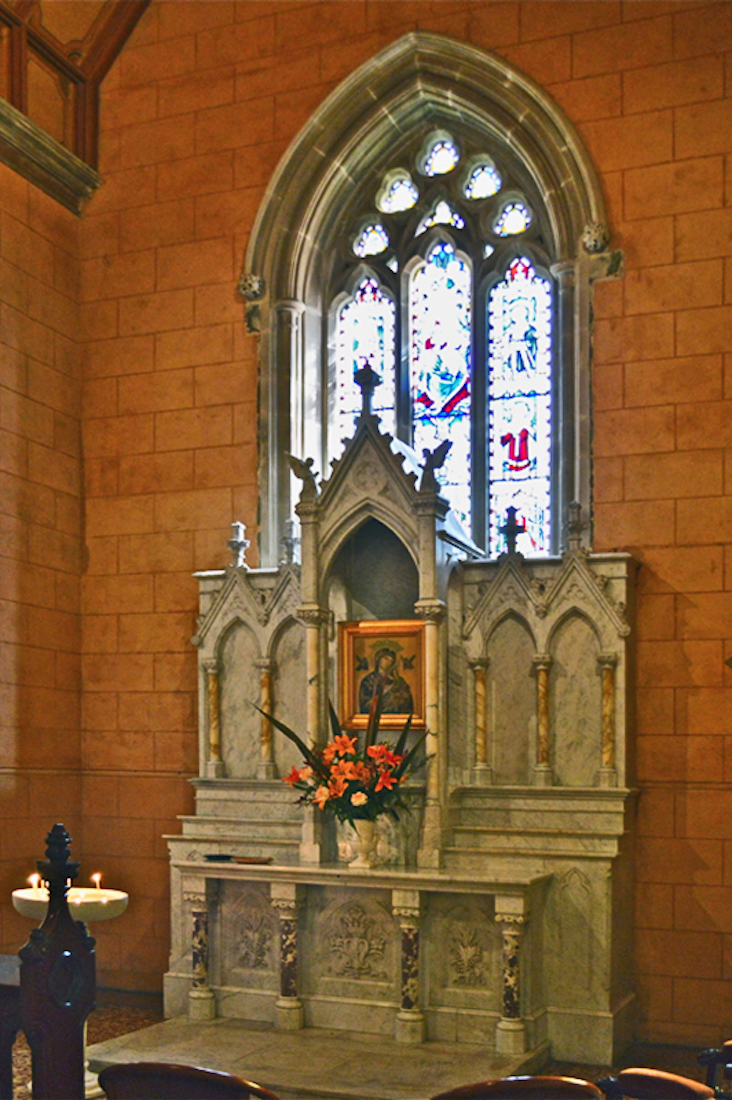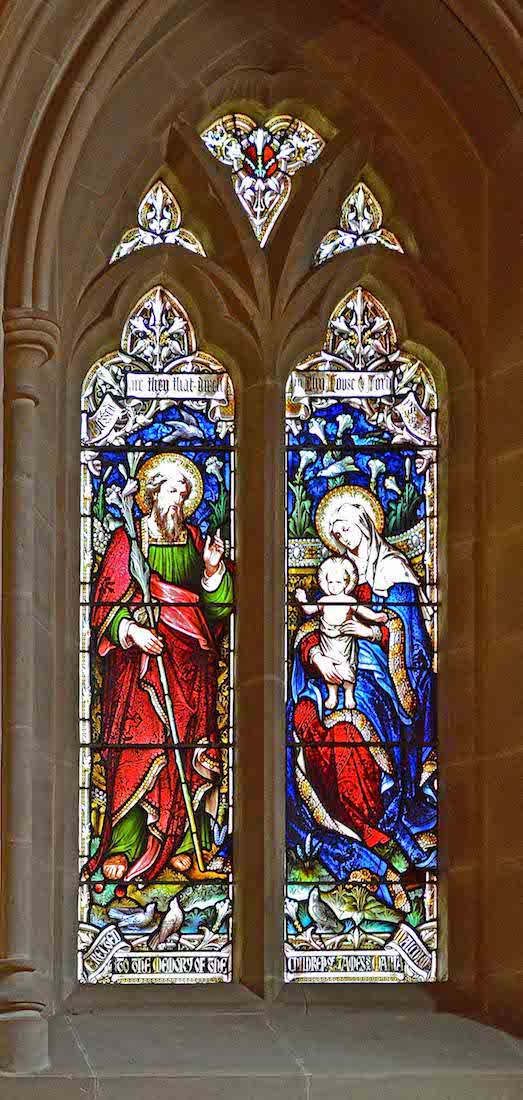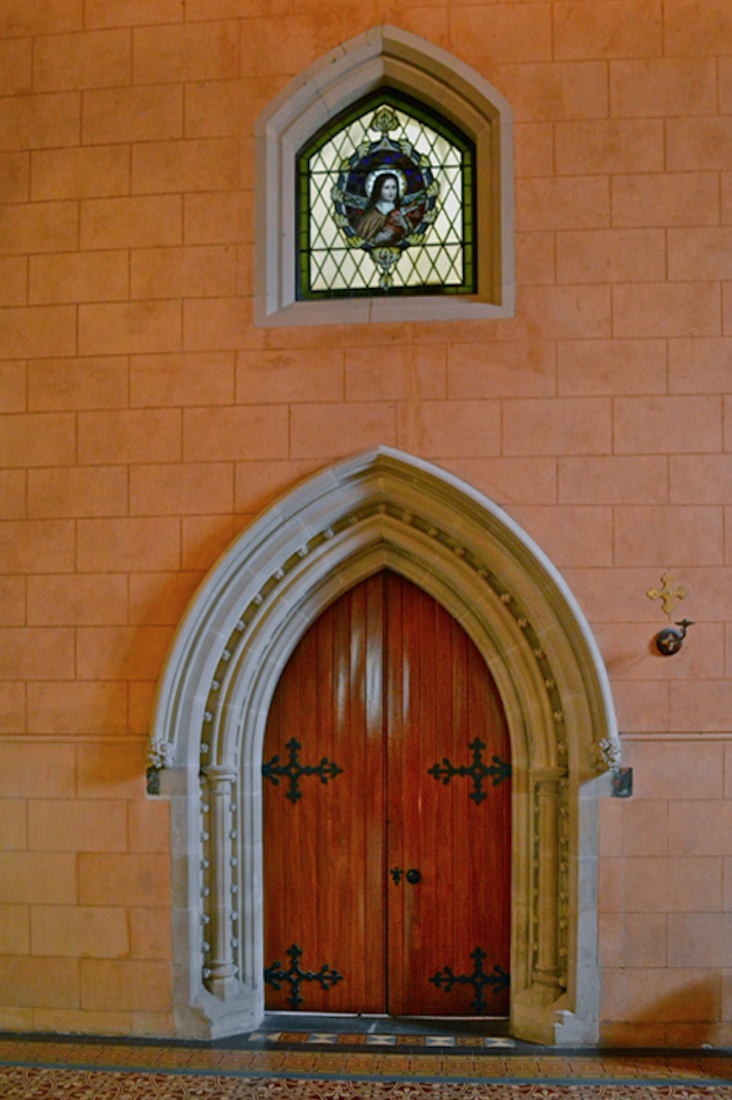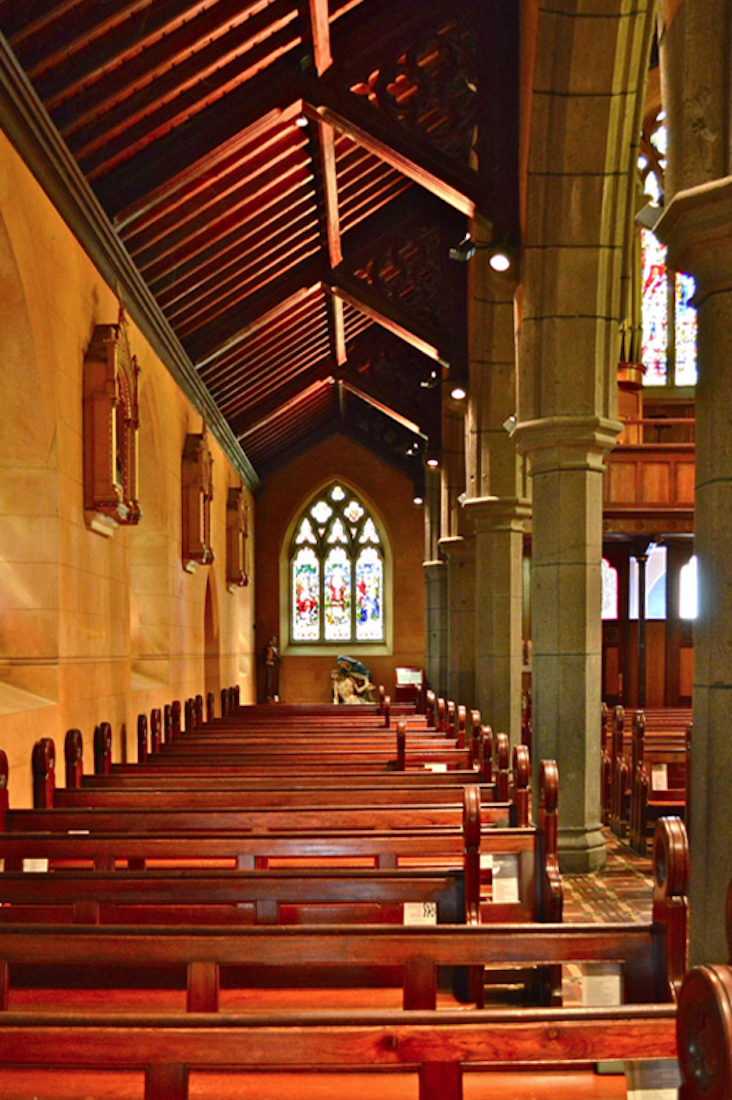
This view of the South side of the Nave facing the West Wall shows the neat little gable roof, the highly placed Stations of the Cross, and at the end, the St Patrick Window. PLAN
23. SACRED HEART
This Carrara marble statue of Christ in the South transept and the statue of Mary in the North transept are the oldest items in the Cathedral, dating from 1874. They originally stood on either side of the altar.
24. ST MARY McKILLOP
This sculpture of St Mary of the Cross MacKillop (1842 – 1900) also stands in the South transept. She was canonized on 17th October 2012. The plaque continues: Sisters of St Joseph in the Diocese of Ballarat, Ballan, Hopetoun, Nhill, Bungaree, Ouyen, Coleraine, Portland, Creswick, Sea Lake, Dennison, Springbank, Dunnolly, Stawell, Gordon, Swan Hill. To love is to serve.
25. CORNER RAILING
I love the little touches found in some cathedrals: like this ornate marble railing around the sanctuary area.
27. CHAPEL PEDESTAL
In the middle of the Mary Chapel there stands a large decorative cement stand containing sand, designed for votive candles. There used to be a beautiful 19th Century vessel, but following fires the present sand filled vessel was introduced.
28. CHAPEL TILING
The sanctuary area and front chapels have the fanciest floor tiling in the Cathedral. This impressive tiling featuring fleurs de lis were thought to have been made in Austria. However, Michael Taffe has recently done some detective work examining the underside of some of the tiles and found the German inscription of Villeroy and Boch.
29. CHAPEL ALTAR
At the front of the Lady Chapel stands an ornate marble altar. There are three lower panels, the central one being the overlaid ‘IHS’ representing the name ‘Jesus’. Behind the flowers there is a decorative arch.
30. CHAPEL WINDOW
The Lady Chapel window was installed in May 1880. The three windows in the East wall are of German origin, and there is a slight variation in colour and design from the rest of the windows. The three lancets in this window divide into six panels: the top three show the Lord’s Supper, the bottom three scenes from the life of Christ. The windows on the West wall are of national significance.
32. NAVE ALTAR
The nave altar is constructed of dark reddish-brown marble. At the front is a stylized cross with sketches of a vine branch and sheaf of grain on either side – symbolizing the Eucharist elements of Bread and Wine. These in turn speak of the broken Body and shed Blood of Christ. This altar is new, given by the Archdiocese of Melbourne, was consecrated by Cardinal George Pell on April 26, 2000.
33. EAST WINDOW
This main chancel window is dedicated to the memory of Miss Caroline Carpenter, with the date 1883. The window depicts the suffering and crucifixion of Christ.
34. HIGH ALTAR
The high altar is very ornate. At the centre is a gold Crucifix standing in a small portico atop a small enclosure for the Elements of the Eucharist. There are two bas reliefs on either side depicting the suffering and crucifixion of Christ. The lower panels are richly decorated with precious stones. The high altar was purchased from Rome in 1887. The altar is of Carrara marble inlaid with precious stones including Antico Rossi, Lapis Lazuli and antique marbles.
35. SANCTUARY CEILING
The arched roof of the sanctuary is a delight. Made up of identical panels, the recurring design is of a Cross and crown – the Crucified and Glorified Christ.
37. BAPTISTRY
As we move North of the sanctuary area, we come to the elegant baptistry. The font sits on a slightly elevated marble platform with an ornate cross of Celtic design.
38. CHAPEL ALTAR
The chapel to the North of the sanctuary area is called the Blessed Sacrament Chapel. It contains yet another ornate marble altar which dates from the 1880s. The painting is of St Thérèse of Lisieux.
39. CHAPEL WINDOW
The stained glass window in the Blessed Sacrament Chapel, like the other windows of the Eastern wall, is of German origin, and was installed in May 1890. The two panels depict the Holy Family.
40. CHAPEL DOOR
The doorway leading out from this side chapel is relatively plain, but the detail of the arch caught my attention. Builders in the old days seemed to have the time to pay a lot of attention to detail!


